Addition of methyltestosterone led to statistically significant findings, but did not demonstrate sex reversal
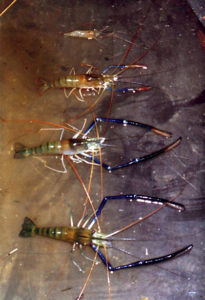
Male freshwater prawns (Macrobrachium rosenbergii) display differential growth rates that contribute to wide variations of size within their populations, while females tend to grow at more uniform rates. In culture ponds, about 20 percent of the fastest-growing males develop long claws and are termed “bull” males or blue claw morphotypes. Approximately 60 percent of the males grow without a corresponding development of gonadal tissue. Termed orange claw morphotypes, they have moderate- length claws. The smallest 20 percent of the male population develop mature gonads but grow at a comparatively slower rate.
The wide size variation, combined with the larger animals’ aggressive behavior, often results in cannibalism and reduced overall survival. The differing sizes encountered at harvest also create problems for marketing. Size grading of juvenile populations prior to stocking into production ponds reduces size variation and can increase production. The production of all-female populations or elimination of male morphotypes can also contribute to a reduction in the magnitude of size variation and correspondingly improve yields.
Hormonal sex reversal
The methods used to achieve sex reversal have included surgical procedures, breeding programs, exposure to radiation, and injecting or feeding hormones. The long published history of research conducted on the effects of steroid hormones in crustaceans reports mixed results following injection and oral administration of the compounds.
All-male populations of freshwater prawns have been created by the surgical implantation of portions of an adult male’s androgenic gland into juvenile females after the initiation of morphological sex differentiation. In contrast, removal of androgenic glands from male prawns during early stages of development resulted in feminization.
Dietary administration of hormones is likely a more practical approach to altering the sex ratios of commercial-scale populations. The experiments described below were designed to evaluate the effects of feeding methyltestosterone and dopamine to postlarval prawns on sex ratios, growth, and survival.
Common protocols
Postlarval prawns were purchased from a commercial supplier and randomly stocked at a density of 2.5 prawns per liter into 33, 90-l experimental aquariums with fresh flow-through well water. At stocking, the postlarvae were approximately three days postmetamorphosis and had a mean individual wet weight of 0.01 grams. High-density polyethylene mesh was provided in each aquarium as substrate.
The prawns were fed a base commercial diet with 55 percent crude protein and 15 percent crude fat. 17α-methyltestosterone and dopamine hydrochloride (dopamine) were added to the diet by dissolving the hormones in ethyl alcohol, submersing the diet in the mixture, and then evaporating the alcohol. A control diet was prepared similarly, except no hormones were added to the alcohol treatment.
Diet portions were based upon standard feeding recommendations for the nursery phase of culture. Uneaten feed was siphoned weekly from each aquarium throughout the culture period to prevent accumulation.
Methyltestosterone experiment
In an experiment with 3 replicates per treatment, the prawns received diets containing 100, 200, or 400 mg methyltestosterone per kilograms feed. Each group was fed for 20, 40, or 60 days. All prawns were cultured for 100 days and received te control diet after each treatment period expired.
At the termination of the experiment, the percentage of males did not differ significantly among the treatments. The dietary supplementation of methyltestosterone did not effect growth according to mean individual weight or length. No effect of feeding duration for feeds containing methyltestosterone was evident.
The mean survival of the prawns fed the control diet was significantly higher than that for all prawns fed diets with methyltestosterone. Mean survival between male and female prawns, among durations of feeding methyltestosterone-containing diets, and among concentrations of methyltestosterone did not differ significantly.
This experiment demonstrated that dietary administration of MT was not an effective method to alter the sex of freshwater prawns during postlarval growth in the nursery stage. This may not have been possible because the developmentally sensitive period for eliciting a response may have already passed, due to the fact that the experiment was initiated with postlarvae that were three days postmetamorphosis.
A previous study reported a significant difference in the sex ratio of M. rosenbergii larvae fed artemia nauplii enriched with lipid containing MT at 30, 50, and 100 mg per liter for 50 days. Although, when the results of this study are examined, the control population had 29 percent males, and the greatest percentage of males fed methyltestosterone was 48 percent. This difference was statistically significant but clearly did not demonstrate sex reversal.
Dopamine experiment
Treatments in a second experiment consisted of feeding postlarvae diets containing dopamine at 0.15, 1.50, and 15.00 milligrams per kilogram, while the control diet contained no dopamine. Each treatment was replicated in four aquariums over a 60-day culture period.
At the termination of the experiment, the percentage of females was significantly higher than the controls in all treatments receiving dopamine in the diets. For the diets lacking dopamine hydrochloride, 62.6 percent of the population was female. For the treatments with 0.15, 1.50 and 15.00 mg dopamine per kilogram, survivals were 80.9, 88.0, and 71.3 percent, respectively (Fig. 1). There was no significant difference in growth between the control and treatments fed dopamine.
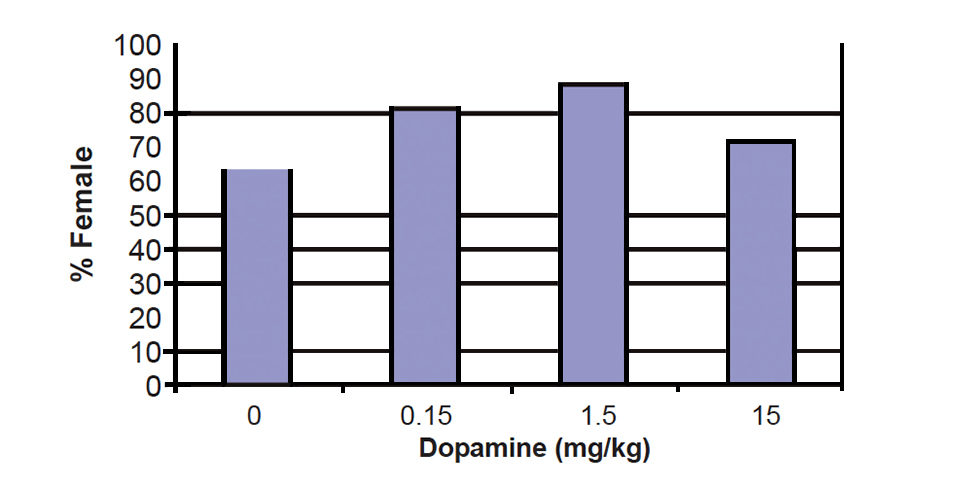
This was the first reported use of the dietary administration of dopamine to crustaceans and the first evidence suggesting that development of gonads and possibly sex differentiation can be affected by administration of this compound. Although the dopamine-supplemented diets did not produce 100 percent females, these data showed consistent and significant alterations in the percentages of females in a population when dopamine was provided in their diets.
Reversal or suppression
Several questions arise with these results. Since the percent sex data was based on the presence or absence of external male genitalia, it is unknown whether complete sex reversal occurred or just a suppression in the development of male gonads. Naturally present in crustaceans, dopamine regulates the release of androgenic gland hormone. Feeding dopamine may have prevented the release of the hormone from the androgenic gland and therefore suppressed the development of the testes.
Further evaluation of the dietary administration of dopamine hydrochloride is warranted to determine whether the results can be replicated and whether females can be exclusively produced. In addition, prawns will need to be grown to larger sizes to document whether the effect of dopamine is permanent or the process of sex differentiation is just halted.
(Editor’s Note: This article was originally published in the November/December 2006 print edition of the Global Aquaculture Advocate.)
Now that you've reached the end of the article ...
… please consider supporting GSA’s mission to advance responsible seafood practices through education, advocacy and third-party assurances. The Advocate aims to document the evolution of responsible seafood practices and share the expansive knowledge of our vast network of contributors.
By becoming a Global Seafood Alliance member, you’re ensuring that all of the pre-competitive work we do through member benefits, resources and events can continue. Individual membership costs just $50 a year.
Not a GSA member? Join us.
Author
-
Cortney L. Ohs, Ph.D.
University of Florida
Institute of Food and Agricultural Sciences
Indian River Research and Education Center
2199 South Rock Road
Fort Pierce, Florida 32945 USA
Related Posts
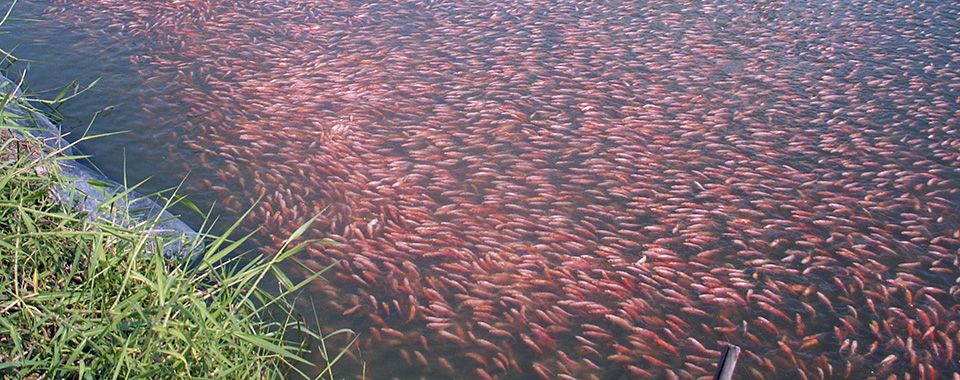
Health & Welfare
Artificial incubation, hormonal sex reversal promoted tilapia boom
The tilapia production boom results from technology that combines artificial egg incubation and monosex fry production using hormonal sex reversal.
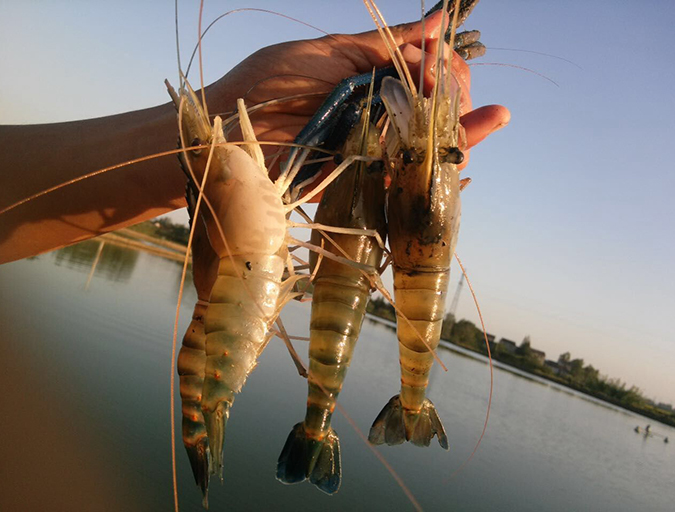
Intelligence
Culture of giant freshwater prawns in China
Farming of giant freshwater prawns is very popular in China. The Yangtze River Delta region produces more than 60 percent of the country's output. Production increases have resulted from a novel system that involves greenhouses that allow ponds to be stocked ahead by two months.
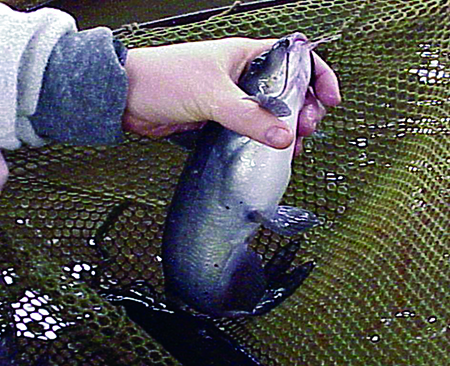
Health & Welfare
Arginine: Essential element in fish nutrition, health
Studies indicate dietary arginine supplementation may constitute an effective means of increasing immunocompetency and disease resistance of fish.
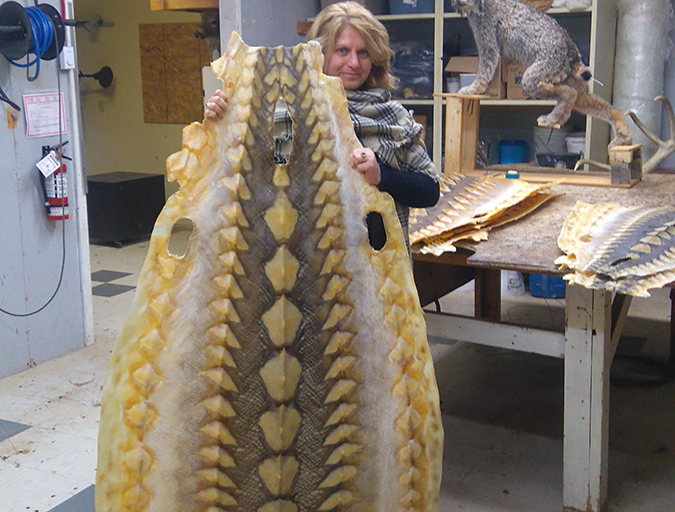
Intelligence
As sturgeon farming grows, demand concerns emerge
Caviar, or lightly salted sturgeon roe, has been enjoyed for centuries as an expensive gourmet delicacy. After a drastic decline in wild sturgeon stocks, aquaculture stepped in to fill the void. But can farmed supply find lasting balance with market demand?


